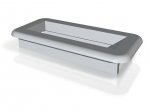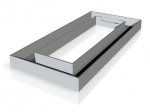I have many Picaxe projects around my house doing useful things. One common theme is that they all need a board, a box for protection, often a display, some leds and perhaps a battery or an SMPS.
Now I want to build another one, in this case a boiler dry-cycling preventer. I have exhausted my ideas for reducing my electricity consumption and now I'm working on the gas. This apparently is a source of significant losses, at least worthy of an experiment. The idea is to make sure that the boiler never fires for space heating unless there is room demand; the return temperature is below some threshold; and the outside temperature is below another threshold.
But I then need to do all the work again, when what I would like is some kind of generic package that does the basics. So does anyone know of a reasonably-priced, ready packaged system with a display and a Picaxe chip ready for programming that I could consider? Obviously no one product would meet every need, but for simple projects such as this (not much more than a few temperature sensors, a display and a relay) I could imagine such a thing might exist. Any ideas? Any commercial unit is bound to look prettier than my own efforts, and could save a lot of repeated effort.
Now I want to build another one, in this case a boiler dry-cycling preventer. I have exhausted my ideas for reducing my electricity consumption and now I'm working on the gas. This apparently is a source of significant losses, at least worthy of an experiment. The idea is to make sure that the boiler never fires for space heating unless there is room demand; the return temperature is below some threshold; and the outside temperature is below another threshold.
But I then need to do all the work again, when what I would like is some kind of generic package that does the basics. So does anyone know of a reasonably-priced, ready packaged system with a display and a Picaxe chip ready for programming that I could consider? Obviously no one product would meet every need, but for simple projects such as this (not much more than a few temperature sensors, a display and a relay) I could imagine such a thing might exist. Any ideas? Any commercial unit is bound to look prettier than my own efforts, and could save a lot of repeated effort.


